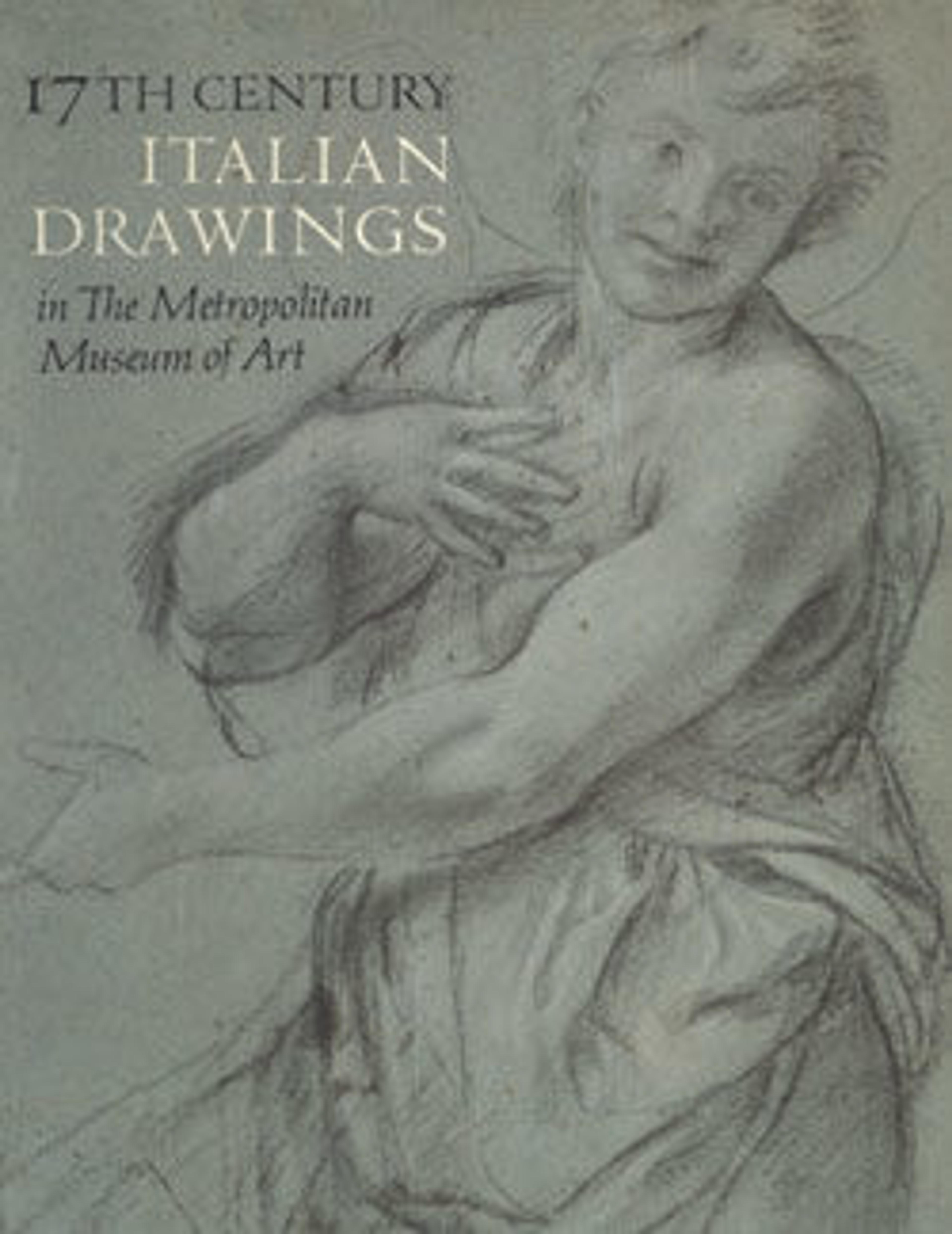The Virgin and Saint Rosalia Interceding with Christ
Saint Rosalia, shown at the left in supplication before Christ and the Virgin, is the patron saint of Palermo, Sicily. Her presence here suggests that the unknown or unidentified altarpiece for which this is presumably a study was commissioned for a church in Palermo. The figure at the bottom edge of this exceptionally free and fluid design is a flying angel wielding a sword, who wards off war and pestilence. As patron saint of the city, Saint Rosalia's intercession was invoked in Palermo during times of plague and natural disasters such as earthquakes.
Maratti's drawing may be an idea for a votive painting commissioned in the wake of such a catastrophe. Christ, the Virgin, and Saint Rosalia appear grouped in much the same way at the upper left in a drawing, also attributed to Maratti by P.-J. Mariette, preserved in the Musée du Louvre (inv. 3356). This compositional study represents Saint Rosalia interceding for the city of Palermo. A flying angel with a sword (just discernible at the lower right margin of the present sketch) drives off figures of War and Pestilence. A view-plan of Palermo and its harbor with Mount Pellegrino appears in the left background of the Louvre design, which must be the project for a major altarpiece.
Although there is no record of a Palermitan commission, however, Maratti did paint in the 1690s a ‘Madonna del Rosario’ for the Oratorio di Saint Zita and a painting feauturing Santa Rosalia was commissione by Prince Maffeo Barberini from Maratti for the church at Palestrina (ear Rome), senting Saint Rosalia interceding for the plague-stricken of that town in 1656 (now Florence, Corsini collection.) The finished modello for this project is in the Metropolitan Museum of Art, inv. no. 1985.29.
Domitilla d'Ormesson called attention to two drawings in Düsseldorf, Museum Kunst Palast (FP 2044 and FP 2217), traditionally and convincingly attributed to Maratti's Palermitan disciple, Giacinto Calandrucci (1646-1707). These represent Saint Rosalia interceding for Palermo and include some of the elements of the Louvre composition, notably the view of Palermo and a Raphael- inspired earthquake god. The Düsseldorf drawings are rather coarse in execution, and they lack the brilliance of the penwork of the Louvre drawing and the present sketch. If the latter are the work of Calandrucci, they show him in an exceptionally brilliant and entirely Marattesque vein. We can find no trace of a painting of this subject by Calandrucci, and indeed the Düsseldorf drawings may be derivations from a scheme elaborated by Maratti.
(Carmen C. Bambach)
Maratti's drawing may be an idea for a votive painting commissioned in the wake of such a catastrophe. Christ, the Virgin, and Saint Rosalia appear grouped in much the same way at the upper left in a drawing, also attributed to Maratti by P.-J. Mariette, preserved in the Musée du Louvre (inv. 3356). This compositional study represents Saint Rosalia interceding for the city of Palermo. A flying angel with a sword (just discernible at the lower right margin of the present sketch) drives off figures of War and Pestilence. A view-plan of Palermo and its harbor with Mount Pellegrino appears in the left background of the Louvre design, which must be the project for a major altarpiece.
Although there is no record of a Palermitan commission, however, Maratti did paint in the 1690s a ‘Madonna del Rosario’ for the Oratorio di Saint Zita and a painting feauturing Santa Rosalia was commissione by Prince Maffeo Barberini from Maratti for the church at Palestrina (ear Rome), senting Saint Rosalia interceding for the plague-stricken of that town in 1656 (now Florence, Corsini collection.) The finished modello for this project is in the Metropolitan Museum of Art, inv. no. 1985.29.
Domitilla d'Ormesson called attention to two drawings in Düsseldorf, Museum Kunst Palast (FP 2044 and FP 2217), traditionally and convincingly attributed to Maratti's Palermitan disciple, Giacinto Calandrucci (1646-1707). These represent Saint Rosalia interceding for Palermo and include some of the elements of the Louvre composition, notably the view of Palermo and a Raphael- inspired earthquake god. The Düsseldorf drawings are rather coarse in execution, and they lack the brilliance of the penwork of the Louvre drawing and the present sketch. If the latter are the work of Calandrucci, they show him in an exceptionally brilliant and entirely Marattesque vein. We can find no trace of a painting of this subject by Calandrucci, and indeed the Düsseldorf drawings may be derivations from a scheme elaborated by Maratti.
(Carmen C. Bambach)
Artwork Details
- Title:The Virgin and Saint Rosalia Interceding with Christ
- Artist:Carlo Maratti (Italian, Camerano 1625–1713 Rome)
- Date:1625–1713
- Medium:Pen and brown ink, over black chalk
- Dimensions:10 5/16 x 8 15/16in. (26.2 x 22.7cm)
- Classification:Drawings
- Credit Line:The Elisha Whittelsey Collection, The Elisha Whittelsey Fund, 1961
- Object Number:61.212.2
- Curatorial Department: Drawings and Prints
More Artwork
Research Resources
The Met provides unparalleled resources for research and welcomes an international community of students and scholars. The Met's Open Access API is where creators and researchers can connect to the The Met collection. Open Access data and public domain images are available for unrestricted commercial and noncommercial use without permission or fee.
To request images under copyright and other restrictions, please use this Image Request form.
Feedback
We continue to research and examine historical and cultural context for objects in The Met collection. If you have comments or questions about this object record, please contact us using the form below. The Museum looks forward to receiving your comments.
